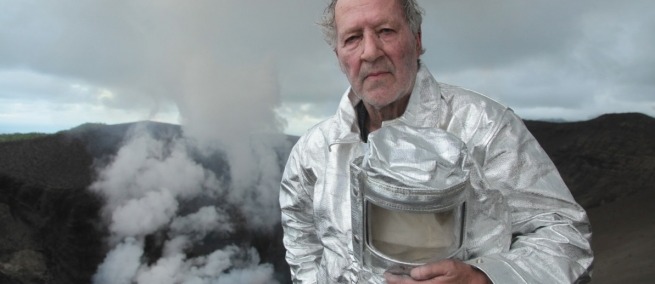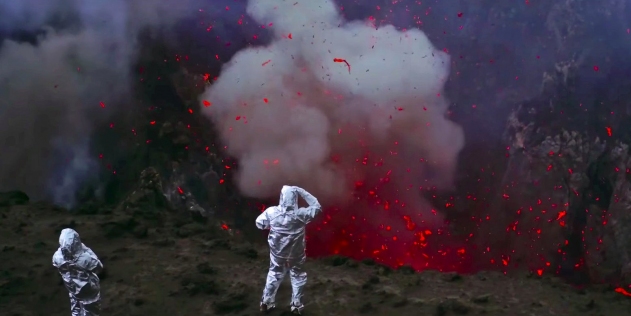
Magma flows and lava spits out bits of the earth’s crust as the German director Werner Herzog trains his camera downwards, in his latest documentary INTO THE INFERNO. Herzog travels around the world with his friend and collaborator Clive Oppenheimer, who is a volcanologist. Dr. Oppenheimer and Herzog first met at an altitude of 10,000 miles, while Herzog was filming ENCOUNTERS AT THE END OF THE WORLD. They were near the peak of Mount Erebus, an active volcano in Antarctica. In INTO THE INFERNO, they visit active volcanoes in North Korea, Iceland, Ethiopia, Indonesia, and Vanuatu.

INTO THE INFERNO illuminates the role that volcanoes have on the self-conception of the cultures Herzog and Dr. Oppenheimer visit. In Vanuatu, on an island called Tanna, the people there have a religion based around a figure named John Frum, who lives in the volcano. One of the town’s headmasters slept in the crater overnight and says he spoke with John Frum. Herzog and Dr. Oppenheimer travel to Mount Paektu in North Korea, which figures into the imagery of the country’s leaders who are often figured standing in front of the volcano. The filmmaking team was provided access because, since 2011, the University of Cambridge has maintained a collaborative science program studying Mount Paektu with volcanologists, including Clive Oppenheimer, from a variety of institutions. A seismograph hooked up to a computer in a small cave near the volcano monitors even the smallest earth movement.
Herzog and Dr. Oppenheimer’s exploration of volcanoes is not without precedent. The French volcanologists Katia and Maurice Krafft spent years, outfitted in silver heat suits, gathering amazing footage of exploding volcanoes. However, they died in 1991 from an eruption of Mount Unzen in Japan–the heat of the gas exploding from the volcano, which reached over 1,500 degrees, killed them instantaneously.

When volcanoes erupt they explode clouds of gas composed of water vapor, sulfur dioxide, carbon dioxide, hydrogen sulfide, and more. Though some of these compounds are potentially deadly, volcanoes also contributed to the earth’s habitable atmosphere–the water vapors released by volcanoes helped fill bodies of water on earth.
The Smithsonian National Museum of Natural History has released a new interactive map which shows the location of volcanic eruptions around the world since 1960. Volcanoes, the map shows, primarily erupt along the perimeter of countries, where the Earth’s tectonic plates meet and have the potential to move. The highest concentration of volcanic eruptions have taken place in Chile, Indonesia, Japan, and Iceland.

INTO THE INFERNO, which played at the 2016 Hamptons International Film Festival, is now on Netflix. Clive Oppenheimer is a Professor of Volcanology at the University of Cambridge and author of Eruptions that Shook the World. His book inspired the film.